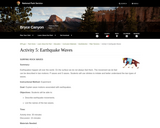
In this lesson, students use slinkies to imitate and better understand the two types of waves assocaited with earthquakes.
- Subject:
- Science
- Material Type:
- Lesson Plan
- Provider:
- National Park Service
- Date Added:
- 07/25/2018

In this lesson, students use slinkies to imitate and better understand the two types of waves assocaited with earthquakes.

In this lesson, students understand the interactions between organisms living in an environment, and how energy flows from one organism and trophic level to another.
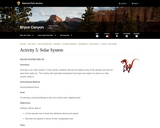
In this activity, students will see the relative sizes of the planets and how far apart they really are. This activity will especially emphasize how large and empty of a place our solar system really is.

In this activity, each collaborative group of students is given a sample of sand and asked to determine how old the sand is by keying out "fossils" (plastic animals) the sand contains. Once each group has dated their sand, groups will work together to stack all the containers of sand in order from oldest to youngest.
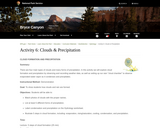
In this activity, students explore cloud formation and precipitation by observing and recording weather data, as well as setting up a "cloud chamber" to observe evaporated water vapor as it condenses and precipitates.

In this lesson, students create a visual representation of a habitat. Students should be able to explain the biotic and abiotic factors in their habitat, how those factors affect the organisms they are displaying in their habitat, the flow of energy through their habitat, and the soil and water conditions in their habitat.
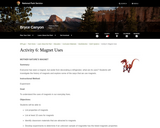
In this activity, students will investigate the history of magnets and explore some of the ways that we use magnets.
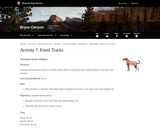
In this activity, students acts as a paleontologist as they create and analyze tracks.
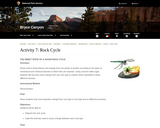
In this activity, students observe how rock properties change from rock type to rock type due to different processes. Students will diagram the rock cycle and label the stresses that cause change between each rock type.
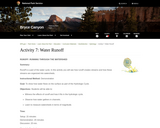
In this activity, students demonstrate how water flows on the surface as part of the hydrologic cycle. Students will observe how water gathers in channels and learn how to measure watersheds in terms of magnitude.
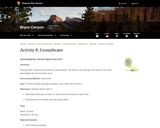
In this activity, students use sponges and sand to show how groundwater fits into the water cycle.
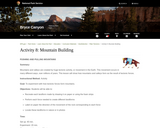
In this lesson, students experiment with how tectonic forces form mountains. Students will recreate each landform made by drawing it on paper or using foam strips to model. After performing the force needed to create different landforms, students will label on paper the direction of the movement of the rock corresponding to each force.

In this activity, students are introduced to water and its three phases - solid, liquid, vapor. Students will use their senses to observe, taste, feel, and describe water, and their imaginations to understand the concepts of water's phases.
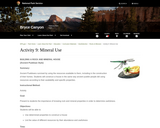
In this lesson, students will construct a house in the same way ancient pueblo people did using resources according to their availability and specific properties. Students will understand the importance of knowing rock and mineral properties in order to determine usefulness.

In this activity, students remove measured amounts of water from a 5-gallon bucket, simulating the amount of fresh water available on earth.

Students are shown the relationship between analog clocks and angles. Students measure the angles of given times on the clock, in addition to answering questions about clocks and angles.
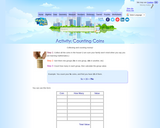
In this activity, students collect, sort, and find the value of coins.
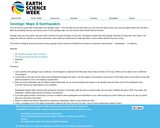
Students will examine geologic maps in order to assess the likelihood and location of earthquakes in California.

Students will examine geologic maps in order to understand how water shapes the land and is stored within the land - in part of the Grand Canyon.

Students will examine the choices people make regarding the use of water.